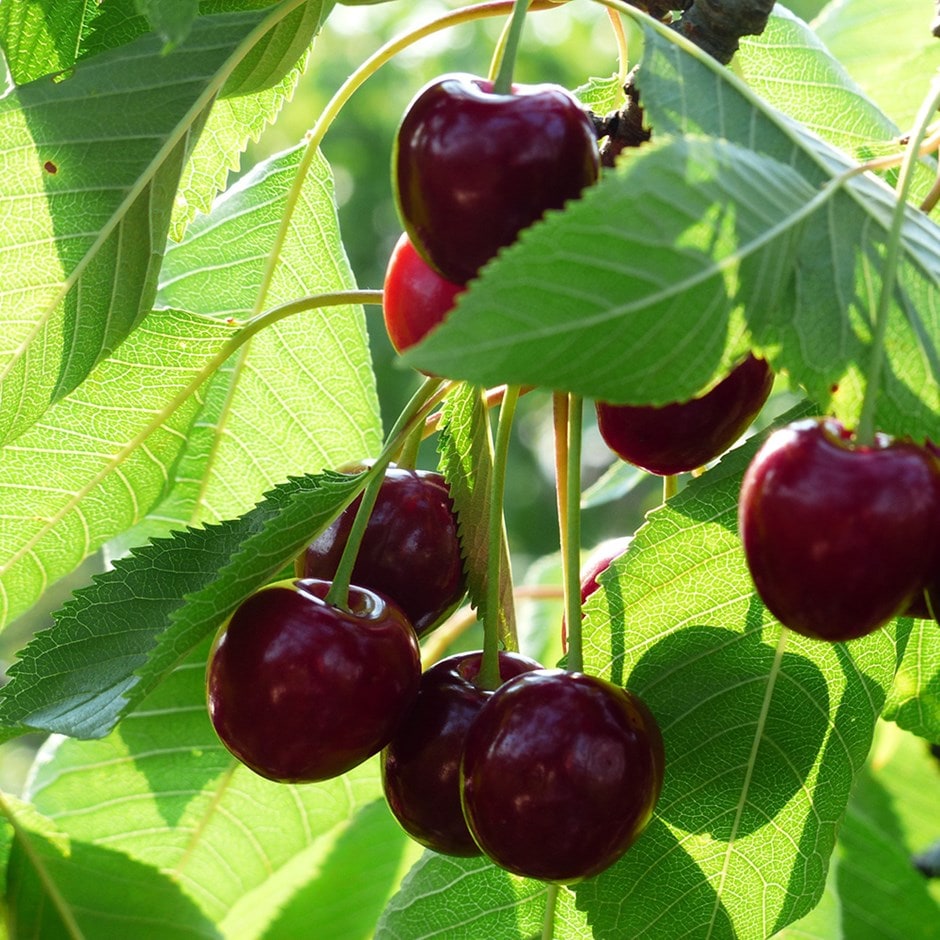cherry 'Lapins'
sweet cherry (syn. Prunus avium Lapins)
This tree is deciduous so it will lose all its leaves in autumn, then fresh new foliage appears again each spring.
- Position: full sun
- Soil: moderately fertile, moist, well-drained soil
- Rate of growth: average
- Flowering period: April to May
- Hardiness: fully hardy
A top-performing cherry variety, known for its large, dark red, and juicy fruit with a mild sweet/sharp flavour, excellent for eating fresh, in baking, or for preserving. This self-fertile tree produces heavy crops, making it an excellent choice for UK gardens, and is resistant to cracking during summer rains, ensuring a bountiful harvest of unblemished cherries. 'Lapins' serves as a great pollinator for other varieties and bears fruit at an early age, making it an ideal option for those seeking a productive and upright-growing cherry tree.
Pollination information: Though partially self-fertile, this cherry will produce a bigger crop if planted with another variety of cherry nearby. Ideally this should come from the same pollination group 3, however it is possible to use one from group 2 or 4 as well.
Pollination information: Though partially self-fertile, this cherry will produce a bigger crop if planted with another variety of cherry nearby. Ideally this should come from the same pollination group 3, however it is possible to use one from group 2 or 4 as well.
When planting your cherry tree, prepare a hole up to three times the diameter of its root system. Fork over the base of the pit in readiness, incorporating plenty of organic matter into the backfill and planting hole. Avoiding frozen and waterlogged soil, trees should be planted out and staked as soon as they arrive. If you've ordered a bare root tree, soak the roots in a bucket of water for half an hour prior to planting, or if this is not possible, they can be heeled in temporarily, covering their roots with soil, or potted up. Protect from cold, drying winds. Apply a balanced fertiliser in early spring to support growth and fruiting. Lightly prune in summer to reduce the risk of silver leaf and bacterial canker, to retain an open ‘goblet’ shape and remove any damaged, diseased or broken branches.

